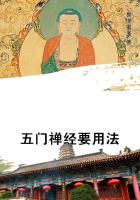By repeated demonstrations Newton thus established his great discovery of the composite character of light. He at once perceived that his researches had an important bearing upon the principles involved in the construction of a telescope. Those who employed the telescope for looking at the stars, had been long aware of the imperfections which prevented all the various rays from being conducted to the same focus. But this imperfection had hitherto been erroneously accounted for. It had been supposed that the reason why success had not been attained in the construction of a refracting telescope was due to the fact that the object glass, made as it then was of a single piece, had not been properly shaped. Mathematicians had abundantly demonstrated that a single lens, if properly figured, must conduct all rays of light to the same focus, provided all rays experienced equal refraction in passing through the glass. Until Newton's discovery of the composition of white light, it had been taken for granted that the several rays in a white beam were equally refrangible. No doubt if this had been the case, a perfect telescope could have been produced by properly shaping the object glass. But when Newton had demonstrated that light was by no means so ****** as had been supposed, it became obvious that a satisfactory refracting telescope was an impossibility when only a single object lens was employed, however carefully that lens might have been wrought. Such an objective might, no doubt, be made to conduct any one group of rays of a particular shade to the same focus, but the rays of other colours in the beam of white light must necessarily travel some-what astray. In this way Newton accounted for a great part of the difficulties which had hitherto beset the attempts to construct a perfect refracting telescope.
We now know how these difficulties can be, to a great extent, overcome, by employing for the objective a composite lens made of two pieces of glass possessing different qualities. To these achromatic object glasses, as they are called, the great development of astronomical knowledge, since Newton's time, is due. But it must be remarked that, although the theoretical possibility of constructing an achromatic lens was investigated by Newton, he certainly came to the conclusion that the difficulty could not be removed by employing a composite objective, with two different kinds of glass. In this his marvellous sagacity in the interpretation of nature seems for once to have deserted him. We can, however, hardly regret that Newton failed to discover the achromatic objective, when we observe that it was in consequence of his deeming an achromatic objective to be impossible that he was led to the invention of the reflecting telescope. Finding, as he believed, that the defects of the telescope could not be remedied by any application of the principle of refraction he was led to look in quite a different direction for the improvement of the tool on which the advancement of astronomy depended. The REFRACTION of light depended as he had found, upon the colour of the light. The laws of REFLECTION were, however, quite independent of the colour. Whether rays be red or green, blue or yellow, they are all reflected in precisely the same manner from a mirror. Accordingly, Newton perceived that if he could construct a telescope the action of which depended upon reflection, instead of upon refraction, the difficulty which had hitherto proved an insuperable obstacle to the improvement of the instrument would be evaded.
[PLATE: SIR ISAAC NEWTON'S LITTLE REFLECTOR.]
For this purpose Newton fashioned a concave mirror from a mixture of copper and tin, a combination which gives a surface with almost the lustre of silver. When the light of a star fell upon the surface, an image of the star was produced in the focus of this mirror, and then this image was examined by a magnifying eye- piece. Such is the principle of the famous reflecting telescope which bears the name of Newton. The little reflector which he constructed, represented in the adjoining figure, is still preserved as one of the treasures of the Royal Society. The telescope tube had the very modest dimension of one inch in diameter. It was, however, the precursor of a whole series of magnificent instruments, each outstripping the other in magnitude, until at last the culminating point was attained in 1845, by the construction of Lord Rosse's mammoth reflector of six feet in aperture.
Newton's discovery of the composition of light led to an embittered controversy, which caused no little worry to the great Philosopher.
Some of those who attacked him enjoyed considerable and, it must be admitted, even well-merited repute in the ranks of science. They alleged, however, that the elongation of the coloured band which Newton had noticed was due to this, to that, or to the other--to anything, in fact, rather than to the true cause which Newton assigned. With characteristic patience and love of truth, Newton steadily replied to each such attack. He showed most completely how utterly his adversaries had misunderstood the subject, and how slight indeed was their acquaintance with the natural phenomenon in question. In reply to each point raised, he was ever able to cite fresh experiments and adduce fresh illustrations, until at last his opponents retired worsted from the combat.















